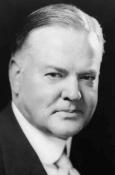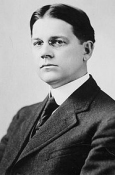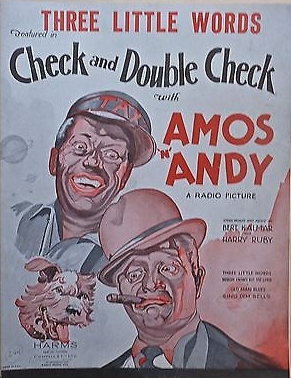
Postage Stamps of the United States - 1930
Politics

President
Herbert Hoover

Postmaster General
Walter F. Brown
Music

Click Control Above To Hear
1930 "Three Little Words
Postage Rates
Domestic Letter Rate: 2¢ per oz.
Postcard Rate: 1¢
Air Mail Rate: 5¢ per oz.
Stamps
The Commemorative Postage Stamps Issued in 1930
Flat Plate - Perf 11 - 400 Subject Plates

Massachusetts Bay
April 8, 1930
74,000,774 issued

Charleston Carolina
April 10, 1930
25,215,574 issued

Braddock's Field
July 9, 1930
25,609,470 issued

von Steuben
Sept. 17, 1930
66,487,000 issued
The Massachusetts Bay Colony Tercentenary
In 1630, the first mass pilgrimage of more than 700, mostly Puritans, landed at Salem, Massachusetts and shortly thereafter moved to the Boston harbor, where the settlement flourished. Over the next ten years 20,000 more colonists arrived, making this the first lasting settlement in New England.
In 1930, a large celebration commemorated the 300th anniversary of this settlement, using this stamp, whose vignette is from the first Seal of the Massachusetts Bay Colony, to promote the event. First Day sales were in Salem and Boston.
The Charleston, South Carolina - 250th Anniversary
In 1930 the Great Depression was well on its way. It's funny how different the world looks when times are difficult. If you've been reading along, it must be quite apparent by now that the Post Office Department did not consider stamp collectors an ally and certainly not a source of revenue. In fact, Postmaster New, 1923-1929, referred to collectors as "cranks" and "nuts" in his correspondence. Issue after issue of stamps commemorating important events in American history had been refused and in their stead, stamps of obvious political nature issued, totally without regard to the revenues these stamps may have provided if properly promoted.
Perhaps it was from a sense of nobility or the feeling that collectors would not put up with a stamp printing entity that issued stamps for profit, but the idea of issuing stamps for profit had not, it seems, occurred to postal officials. In a sign of the bleak times, a congressman wrote the Postmaster suggesting that the revenues generated from the sale of new issues should be considered. The country, in the midst of the Depression, looked for new sources of revenue anywhere it could find it. It wasn't until the republican administration and the politically appointed postmasters under it were ousted in 1932, that this idea fully took hold.
Still, after much lobbying, the 250th anniversary of the founding of Charleston, South Carolina managed to be commemorated with a stamp. The vignette is from a sketch by H. F. Church and portrays then Governor Joseph West and Shadoo, the Indian chief who invited the colonists to settle in the area of what is now Charleston harbor. First Day sales were at the Philatelic Agency in Washington, D.C. and in Charleston, South Carolina.
The Battle of Braddock's Field - Statue of George Washington
This was another in the series of stamps of the period that had nothing to do with commemorating events surrounding the 150th anniversary of the War of Independence, but rather was, like many stamps of the era, purely of political inspiration. Pennsylvania representative Clyde Kelley, whose bill had provided for air mail transportation to be transferred to the private sector, was a native of Braddock, Pennsylvania. It so happened that 1930 marked the 175th anniversary of the Battle at Braddock's Field, a battle in which George Washington, then a non-commissioned "colonel" in the British army, ironically lost. The town of Braddock was to hold a large celebration commemorating this "defeat" and it was hoped the stamp would help promote the event. It must be added that although Washington and General Braddock, who was mortally wounded in the affair, lost the battle, it lay the seeds of Washington's heroism. Washington, of course, went on to become one of the greatest Americans. The stamp depicts a statue of Washington, unveiled at Braddock's Field on July 9, 1930, the day the stamp was issued. First Day sales were at Braddock, Pennsylvania only.
Major General von Steuben - 200th Anniversary of his Birth
The Norwegian Americans had been honored with the Norse American issue, the Swedish Americans with the Ericsson issue, the French Americans with the Walloons, and the English Americans with many issues, including Jamestown and the Pilgrims, but no stamp had yet been issued to honor German Americans.
General von Steuben's contribution to the American cause in the Revolutionary War can not be over estimated. He had trained under Kaiser Wilhelm and had learned the importance of discipline, esprit de corps, and competent leadership. Before von Steuben came to Washington's aid, the American army was a rag tag assortment of undisciplined volunteers who felt no obligation to the ideology of their commanding officers. By encouraging the officers to gain their men's respect through achievement, rather than social, class distinctions, a spirit of camaraderie was achieved, without which America probably would not have been able to sustain the war effort.
As usual, requests to issue this stamp were turned down, but after much prodding, including an attempt to pass a law in congress authorizing the issue, Postmaster Brown relented. After much debate it was decided to use a portrait of von Steuben, taken from a photo of a medallion bearing his likeness, as the vignette for the stamp.
Originally the stamp was to be issued November 15, but a little research showed that von Steuben's birth date was nearly two months earlier, September 17, 1730. When the date of issue was advanced to the correct date, many collectors were caught unaware and failed to get their First Day orders in on time, although enough did that the cover is not particularly scarce. First Day sales were in New York City only.
The Air Mail Stamps Issued in 1930
Flat Plate - Perf 11 - 200 Subject Plates

Flat Plate 5¢ Winged Globe
Feb. 10, 1930
Over 97 million issued
By late 1929, the air mail service was finally becoming fully established and was popular enough that the Bureau could not produce the bi-colored 5¢ Beacon air mail stamp fast enough. At first, it was thought that printing the stamp in one color only, the blue of all 5¢ stamps of the era, would suffice but then it was pointed out that the size of the stamp was also a factor slowing production. The 5¢ Beacon stamp allowed only 100 stamps per sheet, whereas the earlier air mail "Map" stamps were printed in sheets of 200. It was decided to use the 200 stamps per sheet size with a new design. This "winged globe" design was so well received that it was used on all air mail stamps, other than the Graf Zeppelins, for the next five years and as late as 1939 on the 30¢ stamp, Number C24. First Day sales were in Washington, D.C.
The Graf Zeppelins of 1930



Much has been written about the Graf Zeppelin stamps and they remain one of the more popular U.S. issues to this day. They were not intended to be air mail stamps, but it would be unclear as to where else they would be placed in the catalog. In any event, the stamps have been given the numbers C13, C14, and C15.
From the beginning the Zeppelins were intended as promotional items for collectors, promoting the triangular "Pan American" route: Friedrichshafen, Germany to Rio de Janeiro, Brazil to Lakehurst, New Jersey, with intermediate stops in Seville, Spain and Pernambuco, Brazil.
Only a small portion of the revenue derived from the use of these large denomination stamps went to the German and U.S. postal services, with the balance going to the Zeppelin Company in Germany. However, any stamps that were sold as souvenirs to collectors who did not utilize the Zeppelin service represented nearly full profit for the U.S. postal service.
Great care was taken to make the stamps as presentable as possible, including no straight edges. The P.O.D. even appealed to the speculative nature of American collectors by announcing that no more than a million sets would be printed, and that the Zeppelins would remain on sale for only a little over two months and that the remaining stock would be returned to Washington and destroyed on June 30, 1930. The one million figure was far smaller than any recent commemorative and the two month sales life seemingly guaranteed a return on investment.
However, only 227,260 of the 3,000,000 or so possible Zeppelin stamps were sold. The face value of the set, $4.55, was a lot of money in the depression years. Since only 61,296 of the $2.60 stamp were sold, the scarcity and desirability of these stamps is understandable. But when one compares this with the more or less contemporaneous 3¢ Farley sheet of 1935, Number 767, with only 85,914 issued, a number only slightly larger than the number of $2.60 Zeppelins sold and actually less than the number of 65¢ Zeppelins sold, there is obviously more to the story. Truly, the romance of the Zeppelins has not died!
The following postage stamp varieties were first issued by the U.S. in 1930
Ordinary issue
Number 684 - 1½¢ Harding rotary perf 11 x 10.5 - First Day: 12/1/1930
Number 686 - 1½¢ Harding rotary perf 10 vertically - First Day: 12/1/1930
Number 685 - 4¢ Taft rotary perf 11 x 10.5 - First Day: 6/4/1930
Number 687 - 4¢ Taft rotary perf 10 vertically - First Day: 9/1/1930
Commemoratives
Number 682 - 2¢ Massachusetts Bay Colonization
Designers: C. A. Huston & A. R. Meissner - Engravers: L. Schofield (vignette) - E. M. Hall (lettering)
Number 683 - 2¢ Carolina- Charleston Harbor
Designers: C. A. Huston & A. R. Meissner - Engravers: J. C. Benzing (vignette) - F. Lamasure (lettering)
Number 688 - 2¢ Battle of Braddock's Field
Designer: A. R. Meissner - Engravers: J. Eissler (vignette) - E. M. Hall (lettering)
Number 689 - 2¢ Von Steuben
Designer: A. R. Meissner - Engravers: L. S. Schofield (vignette) and E. M. Hall (lettering)
Air Mail
Number C12: The 5¢ Winged Globe - Perf 12
Designer: A. R. Meissner - Engravers: Frederick Pauling (vignette) - E. M. Hall (lettering)
The Graf Zeppelins
Designers: C. Aubrey Huston and A. R. Meissner
Number C13: 65¢ Graf Zeppelin over Atlantic Ocean
Engravers: J. C. Benzing (vignette) - E. M. Hall (frame) - W. B. Wells (lettering)
Number C14: $1.30 Graf Zeppelin between Europe & Americas
Engravers: J. C. Benzing (vignette) - E. M. Hall (frame) - W. B. Wells (lettering)
Number C15: $2.60 Graf Zeppelin over the World
Engravers: L. S. Schofield (vignette) - E. M. Hall (frame) - W. B. Wells (lettering)
Special Delivery
No new varieties of the U.S. Special Delivery stamps were issued in 1930
Postage Dues
Flat Plate - Perf 11 - Carmine - Wet Printings - (note that the 30¢ was issued in 1931)
Number J69: The ½¢ Postage Due - October 29, 1930
Number J70: The 1¢ Postage Due - October 29, 1930
Number J71: The 2¢ Postage Due - October 22, 1930
Number J72: The 3¢ Postage Due - October 31, 1930
Number J73: The 5¢ Postage Due - November 19, 1930
Number J74: The 10¢ Postage Due - November 4, 1930
Number J76: The 50¢ Postage Due - October 22, 1930
Number J77: The $1 Postage Due - July 7, 1930
Number J77a: The $1 Postage Due - Scarlet
Number J78: The $5 Postage Due - July 7, 1930





